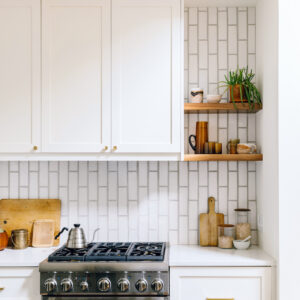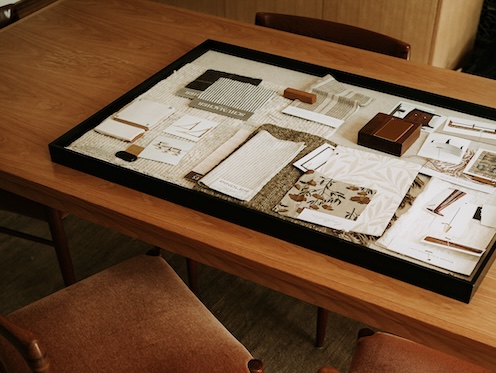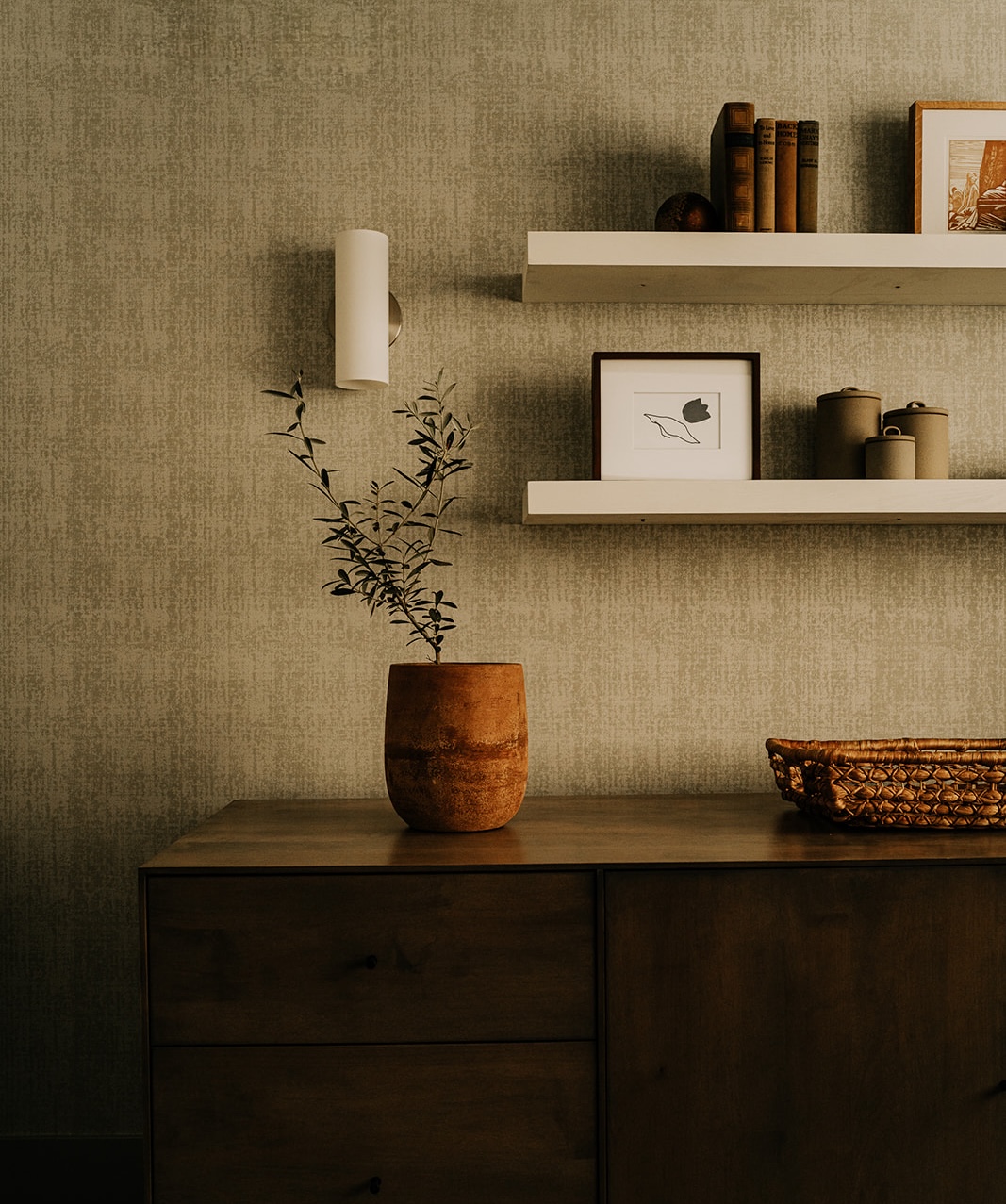MIXING OLD + NEW DESIGN IN HISTORIC HOMES
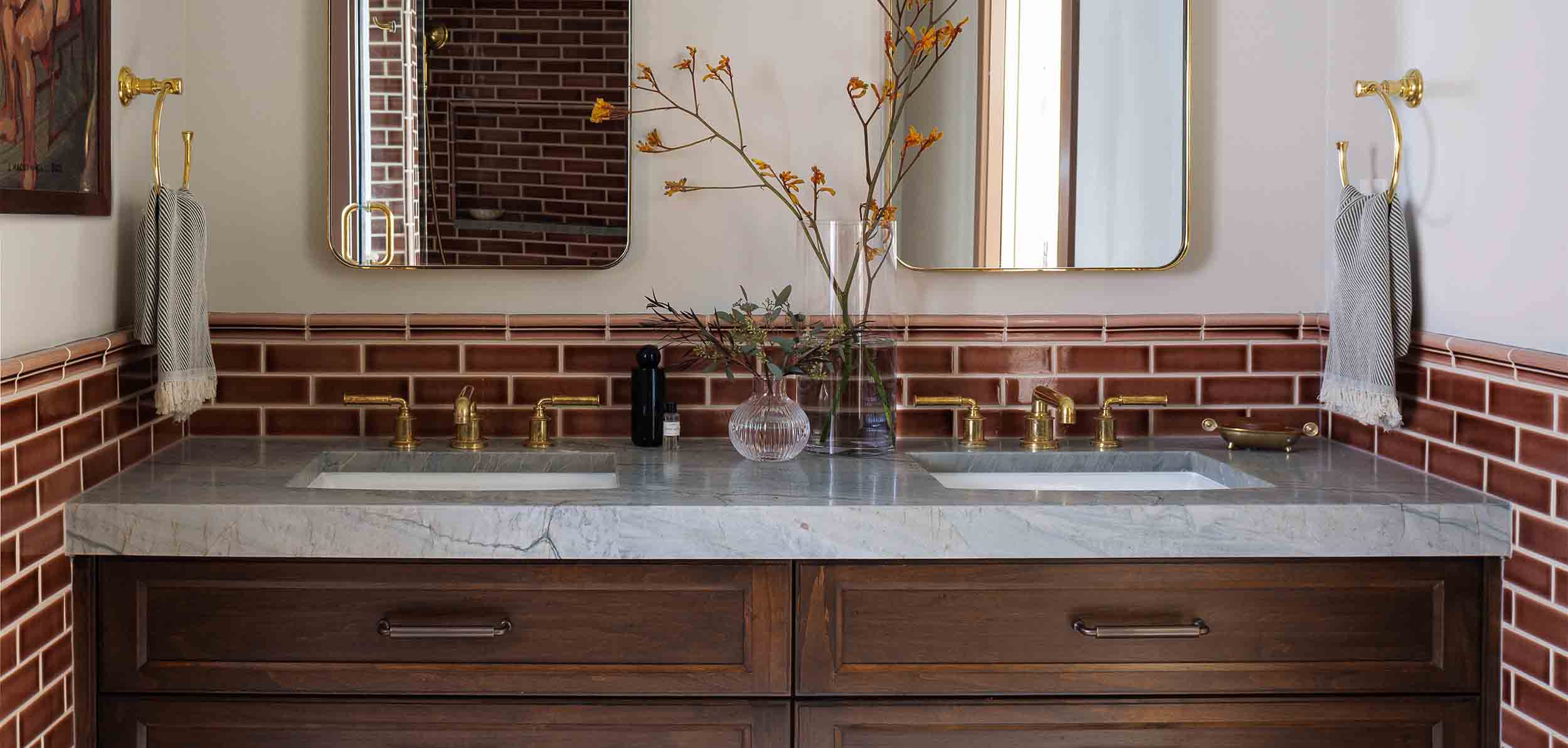
Cohesiveness is the end goal of a well-designed home. If you live in an older house that’s been subjected to multiple remodels by previous owners, a cohesive space can sometimes feel like a pipe dream. How do you find the right balance between old and new, contemporary and traditional?
As specialists in older Denver homes, our team is used to finding a mishmash of styles and time periods in our clients’ spaces. Deciding which style or period to anchor to can be overwhelming for anyone designing on their own, which is why we’re using our recently completed project in the Denver Highlands to share how to mix modern and traditional styles in an old house.
1. FIND YOUR HOME’S ORIGINAL ELEMENTS
We recommend first determining roughly how much of your home is original vs. added at a later date. This can be by square footage (in the event of an addition) or, more typically, by looking at your millwork and finishes. Take a closer look at things like your doors, baseboards, hardware, windows, cabinets, floors, etc. Do they match the age of the house? Let that be your guiding rule on how much to anchor to the original design features of the building.
For example, this project was part of a late Victorian home that had a contemporary addition and ADU. About half the home was original, and half was modern. When tasked with redesigning the primary bathroom, we set out to mix traditional and modern elements equally in order to bridge the gap between the two very different spaces.
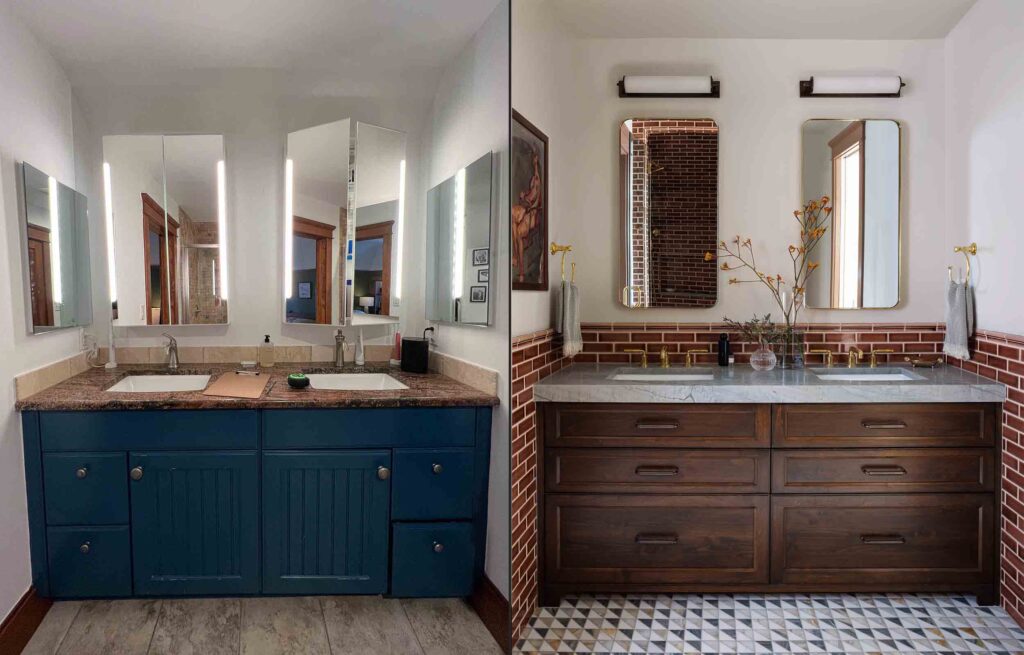
addition and didn’t reference any particular design language. On the right is the “after” – an equal blend of contemporary and traditional.
If your home still retains most of its original design language, try staying faithful to the architectural period when it comes to millwork and hard finishes, and introducing modern pieces in items that are easily changed out – such as lighting, cabinet hardware, furniture, etc.
If your home is more hodge-podge, we say: embrace it! Mix freely (but pull from the styles you see already in place).
2. WHEN WAS YOUR HOME BUILT?
Once you’ve decided how much traditional design to include in your space, it’s helpful to know what kind you’ll want to use.
Most people can find when their home was built through property records and/or realty listings. Our go-to reference for determining a house’s original design period is A Field Guide to American Houses by Virgina McAlester. If you’re less familiar with architectural history, we highly recommend picking up a copy as it’s a quick and easy tool for “discovering” clues to your home using the exterior (which is more likely to be intact).
There are plenty of online resources as well, but our favorite trick is using Zillow to search for nearby homes built during the same time period. Use your sleuthing skills to find original bathroom floor patterns or fireplaces that may have been lost in your own house over time.
Then, use the inspiration you’ve found to start making selections and decisions.
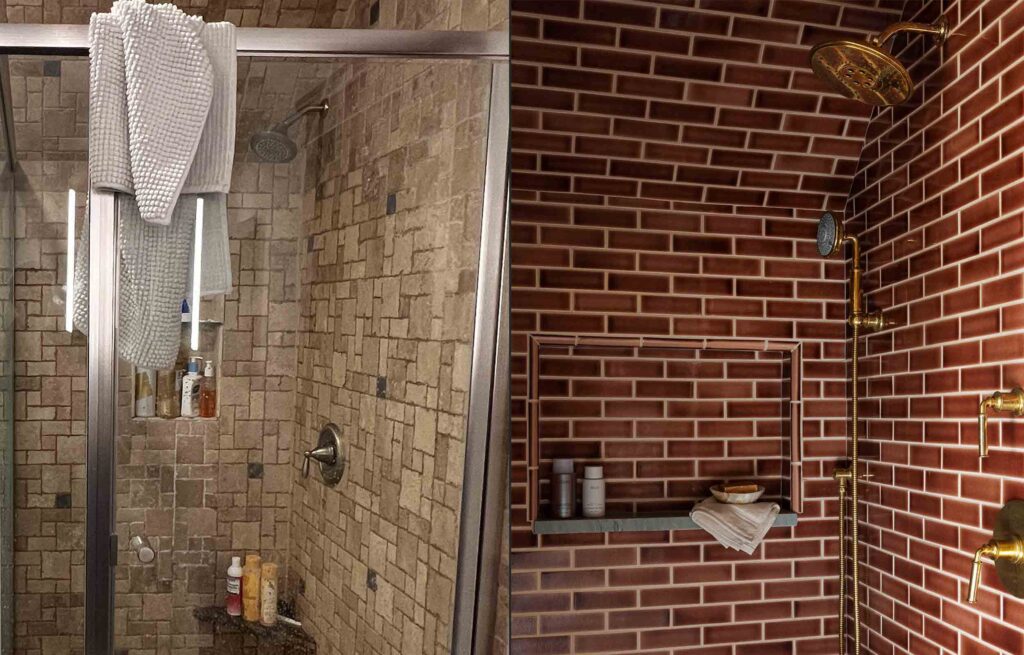
3. HOW TO CHOOSE THE RIGHT MILLWORK
In this space, we knew the locally-made cabinetry and wall tile would anchor the traditional part of the design. Not only is the finish (i.e. wood stain) appropriate for 1905, but we also selected the 5-piece door style to feel at home with the simpler profiles of the cabinetry and doors on the first floor.
Use any original millwork as your guiding principle – even your baseboards or your fireplace can give you clues. Are the profiles (i.e. cross-sections) more curved, such as with a bead or ogee? Or are they angular, like a bevel? You don’t have to match exactly (though often you can!), but try to stay in the same ballpark.

4. HOW TO SELECT PLUMBING + HARDWARE IN OLDER HOMES
We like to keep the more permanent pieces in a home truer to the original time period in which it was built, and introduce more contemporary design in pieces with a shorter “lifespan”, or which may easily be swapped out down the road. There’s something about marrying things like plumbing and cabinetry with a house’s origins that subconsciously lends a permanence and stability to the home in a mysterious, alchemical way.
With a few exceptions in the 1920s and 30s, the door hardware in 19th century and pre-war American homes was most commonly brass while the plumbing fittings were chrome. Our team prefers to use unlacquered brass plumbing fittings (faucets, shower heads, etc.) and door hardware in houses from this period whenever possible – as on the above sink faucet by Newport Brass. Because they lack a synthetic coating, the brass will patina and darken over time – matching any original hardware you may still have. Similarly, we recommend widespread faucets rather than single-hole if your home was built prior to 1940.
We opted for mixing metals (a combination that never fails is oil-rubbed bronze and brass together), and introducing a sleeker, contemporary cabinetry pulls by Classic Brass on the vanity while keeping the faucet traditional. The minimal medicine cabinets and sconces by O’lampia echo these same finishes.
5. HOW TO CHOOSE TILE FOR HISTORIC HOMES
Tile is expensive (not to mention wasteful) to replace and has its own aura of permanence, which is why we usually recommend recreating or adding nods to historical tile patterns, materials, and colors in older homes.
Late 19th and early 20th century bathrooms were primarily focused on sanitation, which translated into an incredible amount of tile in each space – whether halfway up the wall, or to the ceiling (similarly in kitchens).
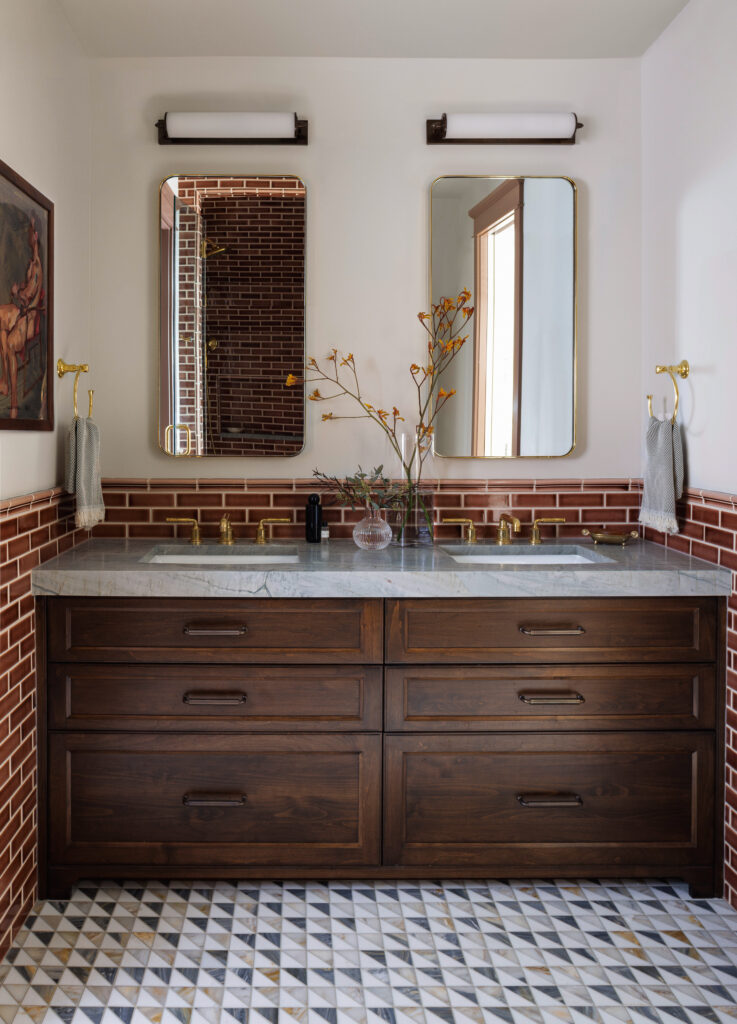
Because this project was a 50/50 mix of modern and traditional, we felt more comfortable blending this geometric marble mosaic tile by Daltile with the offset ceramic subway. We brought the latter up onto the walls of the main space to create a wainscot and added an architectural cap.
NOW BRING IT ALL TOGETHER!
We hope that sheds some light on our philosophy when it comes to designing modern spaces in older, more historic homes and gives you the tools to start thinking about your own renovation.
Be sure to follow us on Instagram for more design inspiration and behind-the-scenes as we continue to craft beautiful, sustainable spaces in Denver and beyond.
And if you’re in the Denver area and are interested in working with us, we encourage you to schedule a complimentary Discovery Call today and find out more about how we can help you create the home of your dreams:



